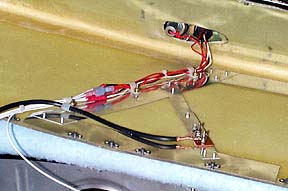eric.kallio
Well Known Member
I have the Bob archer Sa-001 COM antenna in my right wingtip. While I know that the performance will never be as good as some of the other, external, antennas, I am still getting sub-par performance. I have the radio really for ATIS and other non-critical com functions. However, the radio has constant static when receiving and will receive ATIS at a distance of about 1 mile. I computed the SWVR to be 2.01, which is not great, but not all that bad. Can anyone share how they successfully installed (pics would be great) or tuned their antenna for max performance? Right now the radio is essentially useless and it is next on my to do list of things to correct. Thanks.
Eric
Eric







